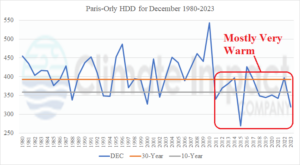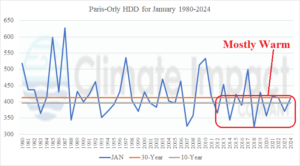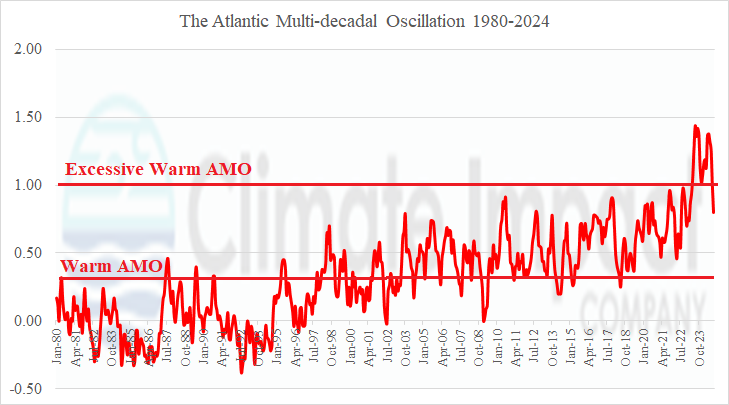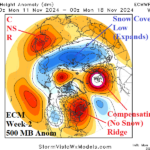



Fig. 1-4: The monthly Atlantic multi-decadal oscillation from 1980-2024 and meteorological winter monthly heating degree days for Paris-Orly.
Discussion: The long-term cycle of the Atlantic multi-decadal oscillation (AMO) shifted to the warm phase in the mid-to-late 1990’s (Fig. 1). The tendency for a consistent warm phase increased in the 2 decades to follow. However, the recent warming, especially in the current decade has reached “excessive warm” values. Contributing to the recent spike in AMO warmth is the emergence of strong and long-lasting marine heat waves (MHW) affecting much of the North Atlantic basin. The influence of strengthening +AMO is evident on wintertime climate across Western Europe. As an example, meteorological winter (DEC/JAN/FEB) heating degree days (HDD) observed in Paris-Orly is reviewed. During December, mostly very warm months (lower HDD) are observed since 2011 and 5 of the past 6 years, December was warmer than the 10-year normal (Fig. 2). During mid-winter, HDD count is somewhat variable averaging warmer than normal but in recent years the tendency for “sneaky cold” as observed in 2013 and 2017 is lost (Fig. 3). A distinct and persistent warm shift is notable in February beginning in 2019 and likely directly related to the recent excessive warm AMO regime (Fig. 4).



